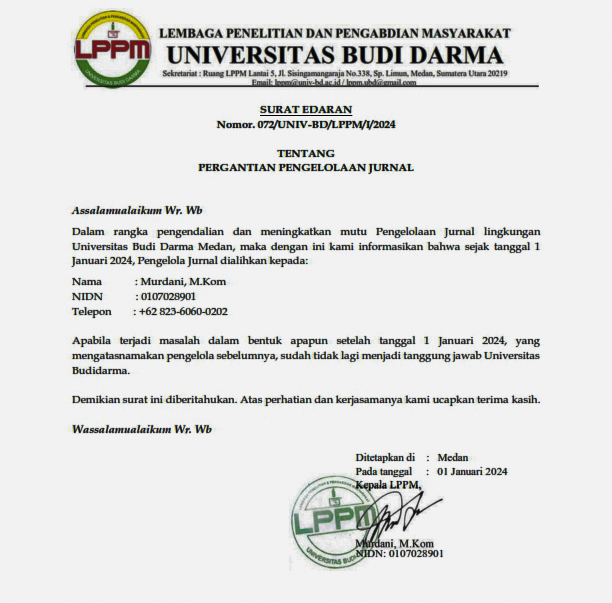Sistem Monitoring dan Analisis Penggunaan Energi Listrik Rumah Berbasis Internet of Things Menggunakan Prophet Algorithm
DOI:
https://doi.org/10.30865/json.v4i3.5896Keywords:
IoT, Prophet Algoritm, Forcasting, Smart HomeAbstract
Electrical energy is one of the necessities of human life, especially in modern society in urban areas. With a monitoring device for electrical energy consumption using IoT technology, the results of the development show that the monitoring system works well, but the results show that current and voltage measurements are still less accurate. Therefore, in this study, an Electrical Energy Analysis and Monitoring System was developed using the IoT-Based Prophet Algorithm. Data collection was obtained from electrical energy using the PZEM-004T module sensor device used at home and the energy data obtained were stored in a MySQL database. This PZEM data retrieval will appear in real-time on the Monitoring Website. The dataset was processed by implementing the Prophet Algorithm, evaluating the model and visualizing the prediction results on the analysis website. Testing using Mean Absolute Percentage Error (MAPE). For design, this system uses energy data and data retrieval time as parameters in the monitoring system for the use of electrical energy at home. Analysis of data taken from electrical energy monitoring was predicted by the model created by the Prophet Algorithm and tested with MAPE to see how accurate the predicted value is in the Prophet Algorithm model. Predictions in this study get an error value of less than 10%, namely 6.87%, which means it is very accurate in predicting the prophet algorithm at home.References
A. Bindra, “Utilizing Energy Harvesting to Power IoT Devices [From the Editor],†IEEE Power Electron. Mag., vol. 8, no. 3, pp. 4–6, 2021, doi: 10.1109/mpel.2021.3099911.
L. Minh Dang, K. Min, H. Wang, M. Jalil Piran, C. Hee Lee, and H. Moon, “Sensor-based and vision-based human activity recognition: A comprehensive survey,†Pattern Recognit., vol. 108, p. 107561, 2020, doi: 10.1016/j.patcog.2020.107561.
V. A. H. Firdaus, P. Y. Saputra, and D. Suprianto, “Intelligence chatbot for Indonesian law on electronic information and transaction,†IOP Conf. Ser. Mater. Sci. Eng., vol. 830, no. 2, 2020, doi: 10.1088/1757-899X/830/2/022089.
I. Setiono et al., “Hubungan Antara Besarnya Daya Listrik Terpasang Dengan Banyaknya Pemakaian Listrik Dalam Skala Rumah Tangga,†pp. 978–979, 2019.
R. H. Yoga Perdana, N. Hidayati, A. W. Yulianto, V. Al Hadid Firdaus, N. N. Sari, and D. Suprianto, “Jig detection using scanning method base on internet of things for smart learning factory,†IEMTRONICS 2020 - Int. IOT, Electron. Mechatronics Conf. Proc., pp. 0–4, 2020, doi: 10.1109/IEMTRONICS51293.2020.9216392.
S. Suryaningsih, S. Hidayat, and F. Abid, “Rancang Bangun Alat Pemantau Penggunaan Energi Listrik Rumah Tangga Berbasis Internet,†vol. V, pp. SNF2016-ERE-87-SNF2016-ERE-90, 2016, doi: 10.21009/0305020617.
N. A. Hussien, A. A. D. Al Magsoosi, A. A. D. Al Magsoosi, H. T. Salim AlRikabi, and F. T. Abed, “Monitoring the Consumption of Electrical Energy Based on the Internet of Things Applications,†Int. J. Interact. Mob. Technol., vol. 15, no. 7, pp. 17–29, 2021, doi: 10.3991/ijim.v15i07.20183.
“Membuat analisis komparatif arima & prophet pada peramalan penjualan - Salsabila Vebi Natasya, Rolly Maulanan Awangga - Google Books.†https://books.google.co.id/books?hl=en&lr=&id=1xquEAAAQBAJ&oi=fnd&pg=PA1&dq=Algoritma+Prophet+bekerja+dengan+sangat+baik+menggunakan+data+deret+waktu+dengan+efek+musiman+yang+kuat+dan+kumpulan+data+dengan+banyak+data&ots=pgPIGbxcv2&sig=W_8LedKLHOkxBI1jltMzPX2hzMY&redir_esc=y#v=onepage&q&f=false (accessed Feb. 27, 2023).
S. J. Taylor and B. Letham, “Forecasting at Scale,†Am. Stat., vol. 72, no. 1, pp. 37–45, 2018, doi: 10.1080/00031305.2017.1380080.
L. Yuliana, “Analisis Perencanaan Penjualan Dengan Metode Time Series (Studi Kasus Pada Pd. Sumber Jaya Aluminium),†J. Mitra Manaj., vol. 3, no. 7, pp. 780–789, 2019, doi: 10.52160/ejmm.v3i7.255.
A. H. Suhaib Ibadurrahman, “Rancang Bangun Smart Home Dengan Konsep Internet of Things (iot) Berbasis Android,†2020.
Z. B. Abilovani, W. Yahya, and F. A. Bakhtiar, “Implementasi Protokol MQTT Untuk Sistem Monitoring Perangkat IoT,†J. Pengemb. Teknol. Inf. dan Ilmu Komput., vol. 2, no. 12, pp. 7521–7527, 2018, [Online]. Available: http://j-ptiik.ub.ac.id
M. F. Pela and R. Pramudita, “Sistem Monitoring Penggunaan Daya Listrik Berbasis Internet of Things Pada Rumah Dengan Menggunakan Aplikasi Blynk,†Infotech J. Technol. Inf., vol. 7, no. 1, pp. 47–54, 2021, doi: 10.37365/jti.v7i1.106.
F. Habibi, Nur, S. Setiawidayat, and M. Mukhsim, “Alat Monitoring Pemakaian Energi Listrik Berbasis Android Menggunakan Modul PZEM-004T,†Pros. Semin. Nas. Teknol. Elektro Terap. 2017, vol. 01, no. 01, pp. 157–162, 2017, [Online]. Available: https://prosiding.polinema.ac.id/sngbr/index.php/sntet/article/view/81/77
W. Song, C. Gao, Y. Zhao, and Y. Zhao, “A time series data filling method based on lstm—taking the stem moisture as an example,†Sensors (Switzerland), vol. 20, no. 18, pp. 1–21, 2020, doi: 10.3390/s20185045.
T. Kavzoglu, “Increasing the accuracy of neural network classification using refined training data,†Environ. Model. Softw., vol. 24, no. 7, pp. 850–858, 2009, doi: 10.1016/j.envsoft.2008.11.012.
F. Gong, N. Han, D. Li, and S. Tian, “Trend Analysis of Building Power Consumption Based on Prophet Algorithm,†2020 Asia Energy Electr. Eng. Symp. AEEES 2020, pp. 1002–1006, 2020, doi: 10.1109/AEEES48850.2020.9121548.
A. E. dan M. N. A. R. Chopra, “Data Science with Python: Combine Python with machine learning principles to ... - Rohan Chopra, Aaron England, Mohamed Noordeen Alaudeen - Google Books,†2019. https://books.google.co.id/books?hl=en&lr=&id=RYmkDwAAQBAJ&oi=fnd&pg=PP1&dq=R.+Chopra,+A.+England+dan+M.+N.+Alaudeen,+Data+Science+with+Python,+Birmingham:+Packt+Publishing+Ltd.,+2019.&ots=IbfPm2ENUh&sig=DC0ExNpmO_Jiiy8bjqBhSNl86qM&redir_esc=y#v=snippet&q=transformation&f=false (accessed Oct. 01, 2022).
P. M. Services, “The ‘Rapid Application Development’ Methodology Approach (RAD) -,†2020. https://cooens.com/knowledge-base/the-rapid-application-development-methodology-approach-rad/ (accessed Dec. 29, 2021).
B. L. Ruddell and P. Kumar, “Unified modeling language,†Hydroinformatics Data Integr. Approaches Comput. Anal. Model., no. 10, pp. 9–20, 2005, doi: 10.4018/jdm.2001010103.
Downloads
Published
How to Cite
Issue
Section
License

This work is licensed under a Creative Commons Attribution 4.0 International License
Authors who publish with this journal agree to the following terms:
- Authors retain copyright and grant the journal right of first publication with the work simultaneously licensed under Creative Commons Attribution 4.0 International License that allows others to share the work with an acknowledgment of the work's authorship and initial publication in this journal.
- Authors are able to enter into separate, additional contractual arrangements for the non-exclusive distribution of the journal's published version of the work (e.g., post it to an institutional repository or publish it in a book), with an acknowledgment of its initial publication in this journal.
- Authors are permitted and encouraged to post their work online (e.g., in institutional repositories or on their website) prior to and during the submission process, as it can lead to productive exchanges, as well as earlier and greater citation of published work (Refer to The Effect of Open Access).





